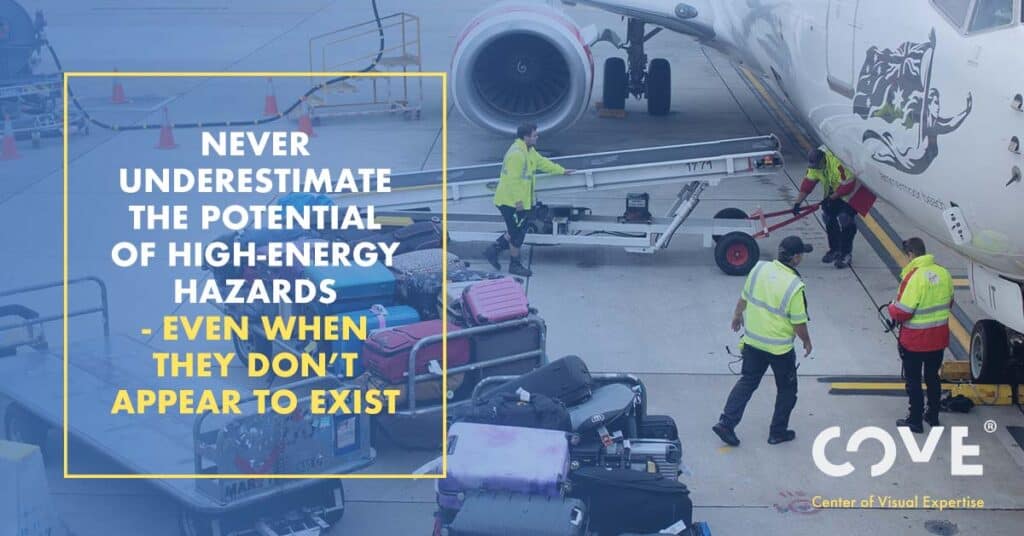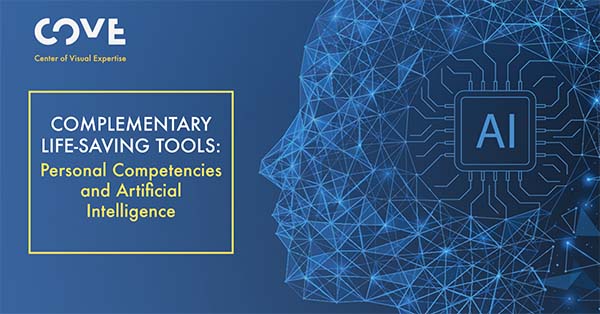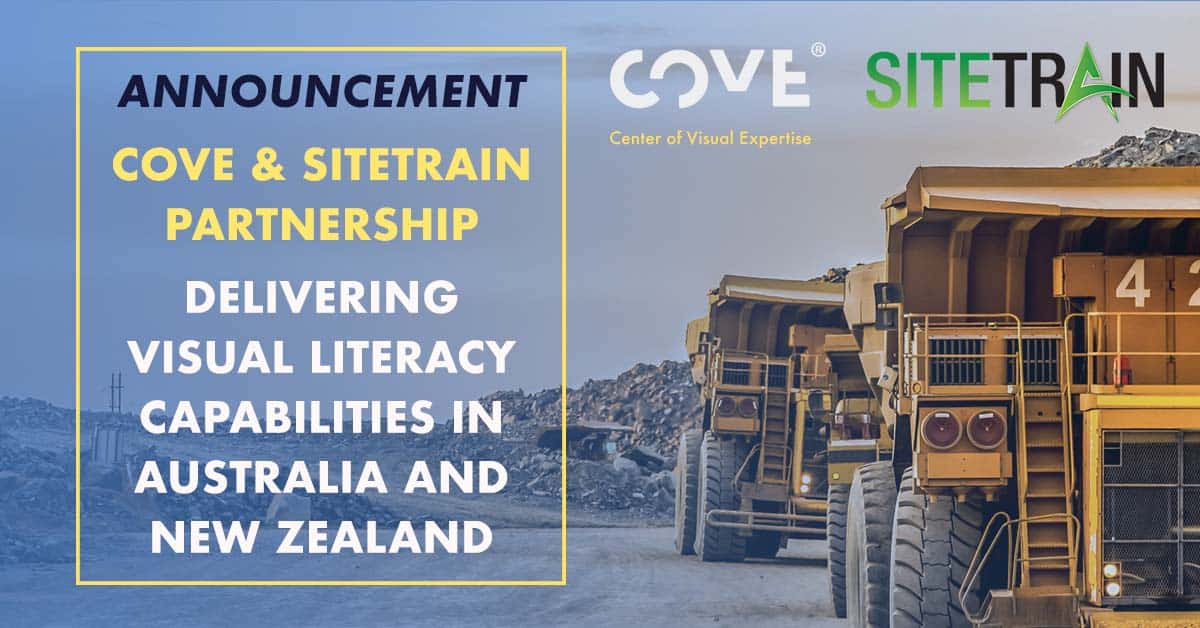High-Energy Control Assessments (HECA) is a proactive leading indicator demonstrating that successful injury prevention controls are in installed and effective. HECA has applications far beyond the Edison Electric Institute’s definition of high energy used by the electric power sector. According to EEI, a high-energy hazard is a hazard that exceeds 500 foot-pounds of physical energy.
High-energy hazards identified by EEI are:
1) suspended load; 2) mobile equipment/traffic with workers on foot; 3) heavy rotating equipment; 4) steam; 5) explosion; 6) electrical contact with sources; 7) high dose of toxic chemical or radiation; 8) fall from elevation; 9) motor vehicle incident (occupant); 10) high temperature; 11) fire with sustained fuel source; 12) excavation or trenching; and 13) arc flash.
Consider the breadth of these hazards across multiple industry sectors. High-energy hazards are present in most manufacturing operations, warehouses, logistics operations, transportation, construction as well as the electric power sector. Don’t overlook potential high-energy hazards in your workplace and the need for a HECA focus and process.
HECA is based on observations of active work, according to the EEI’s “HECA Rules.” Assessments are only conducted on tasks as observed. Assessments of high-energy hazards with corresponding direct controls in place are defined as a “success.” If a direct control is missing or deficient, the assessment is recorded as an “exposure.” “Failure” – a common lagging descriptor of poor safety performance – is never used in HECA processes.
Assessments aim to close the gap between exposure and success – decrease the percentage of exposures and increase the success of having direct and effective controls in place. The HECA process is incomplete and potentially understated if a high-energy hazard is overlooked and missed in initial hazard identification observations.
Any worker who contributes to the HECA process will be more effective if their competency set includes being visually literate. Visually literate observers are trained to slow down a bit to better see the reality of the work environment, find and describe hazards, analyze the degree of risk, and overcome visual biases that filter and cloud what is actually seen.
Critical observations that identify high-energy vulnerabilities can be strengthened by the use of Visual Literacy. Visual Literacy is a powerful enabler for seeing hazards with more clarity and understanding. Visual Literacy parallels and reinforces HECA by 1) defining and isolating high-energy hazards in the HECA information-gathering stage; 2) using critical thinking to analyze tasks with the potential to release dangerous high-energy; and 3) verifying that direct controls are installed and used properly.
Visual Literacy can help increase the number of HECA “successes” by finding overlooked high-energy hazards, some hidden and others that workers pass by daily and miss.
Visual Literacy Helps Close The Gap
Visual Literacy also can keep chronic unease and a sense of vulnerability high in a workplace, as described in recent Professional Safety journal article. How is this accomplished? Visual literacy teaches that we don’t see as well as we think we do. This unsettling fact can sustain a sense of unease and vulnerability. Visual Literacy observations and analyses promote vigilance and a realistic assessment of working conditions. It reinforces chronic unease and vulnerability as a foundation for ongoing alertness and awareness of potential hazards.
A Healthy Skepticism
In dangerous work environments, chronic unease can exist — a healthy skepticism about what people see and how they react to it, according to the Professional Safety article. Chronic unease creates a sense of vulnerability, which can be applied to high energy hazards. Are all high-energy hazards identified, inventoried and controlled? Sensing vulnerabilities and being skeptical of hazard identification observations is a positive mindset. It is in complete contrast to a complacent mindset. The critical thinking and unbiased observations of workers trained in Visual Literacy help answer three questions raised by a sense of vulnerability, according to the Professional Safety article.
1
Who should feel most vulnerable in the workplace?
2
Who is most affected by these vulnerabilities?
3
What controls can address these vulnerabilities?
A Unique Work Environment for High-Energy Hazards
A recent article in The Wall Street Journal investigated the exceptionally hazardous work performed every day by airport tarmac workers, also known as airport ground crews. A 2017 study conducted in the U.S. found that the frequency of non-fatal injuries in the ground handling sector was four times higher than the injury frequency of the industry as a whole. The Flight Safety Foundation reports that around 27,000 airport tarmac incidents occur around the world every year, resulting in injuries to about 243,000 to people.
Ground handlers navigate what the Journal calls “a ballet of moving aircraft and vehicles… under immense time pressure.” A surprising number of hazardous exposures on a tarmac involve high-energy.
High-energy hazards on a tarmac include:
- Scorching temperatures and UV radiation exposure out on runways in the summer can cause heat stress and skin diseases.
- Aircraft maintenance performed at heights, including de-icing operations, can lead to falls (gravity is the energy source).
- Falls from vehicles known as tugs that push back aircraft can also happen.
- Operating heavy equipment and rotating machinery such as snow blowers (mechanical energy) can cause struck by and caught between injuries.
- Forklifts (moving vehicles and foot traffic) can collide or hit ground crew members in the frenzied dance around aircraft on the tarmac.
- Tugs (moving vehicle energy) that don’t have seat belts or properly working brakes can eject operators.
- Conveyor belts (mechanical energy) for moving luggage and freight can snag hair or body parts.
- Aircraft engine “ingestion” zones caused by turbine engines can suck bodies into the engines.
- Slips and falls can occur in icy, snowy conditions in the winter.
- Driving vehicles of various sizes and speeds around and beneath aircraft can collide into each other, injuring occupants.
- Shoving oversized baggage, suitcases and golf clubs into the belly of an aircraft runs the risk of being hit by falling loads if dislodged (suspended load energy).
A Fatal Case of Unease
A 40-year-old LaGuardia Airport (New York City) worker was uneasy when ordered to shift from his airport cleaning job to work on the tarmac directing water trucks that bring water to the planes. According to the New York Daily News, he repeatedly asked to be reassigned due to the danger of his work, but his requests went unanswered. Soon after the man was killed — struck and pinned between a water truck and a jet.
Airport tarmac work, when seen from the window of a passenger jet, may seem unlikely to have high-energy exposures. But the work routinely involves these high-energy hazards: suspended loads; mobile equipment/traffic with workers on foot; heavy rotating equipment; electrical contact with sources; fall from elevation; motor vehicle incident (occupant); and high temperatures. Yet these high-energy hazards often are taken for granted or unknowingly dismissed as being devoid of high energy. If the hazard is not identified, it cannot be assessed and controlled. The process starts with recognizing the hazard.
Visual Literacy, High-Energy Control Assessments, and a proactive mindset of chronic unease and a sense of vulnerability is a powerful toolkit for seeing the reality of work environment hazards – not only on airport tarmacs but in confined spaces, trenches, assembly lines, material handling, maintenance work, construction activity and many other tasks. Visual Literacy, HECA and a mindset of uncertainty and suspected vulnerabilities can be a powerful combination to prevent serious injuries and fatalities in many work environments where high energy risks may not be apparent or addressed.
Join us for a Foundations of Visual Literacy Workshop and learn more about this powerful toolkit that improves your ability to see the reality of work environment hazards.




